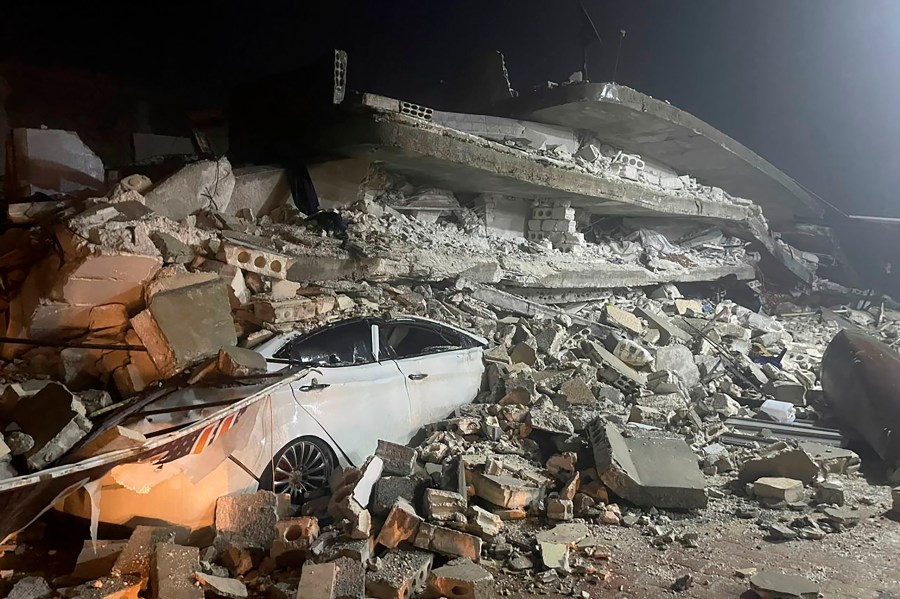Why the earthquake in Turkey, Syria was so devastating
More than 2,000 people died and thousands more were injured following a massive earthquake that hit Gaziantep, a town in southeastern Turkey near the Syrian border early Monday morning.
Additional aftershocks, including one almost as strong as the initial quake, made it an especially disastrous event.
Registering as a 7.8 magnitude earthquake, the Gaziantep event is classified as a “major” earthquake and resulted in significant damage to the region.
It broke out near a fault line, which is a region where tectonic plates meet.
In this case, Jessica Turner, a geologist from the U.S. Geological Survey (USGS), said the region is at a three-way meeting between faults, called the Anatolian fault zone area, where the African, Anatolian and Arabian plates come together, which increases the risk for devastating earthquakes. It’s also a densely populated area, which increases the danger of destruction and loss of life.
What causes earthquakes?

The Earth’s crust is made up of multiple segments called tectonic plates, which can move around.
Sometimes when they slide up against one another, pressure can build up from the friction. If the pressure builds up enough, it can cause a plate to jerk across its neighbor, producing an earthquake. In this particular case, the Arabian plate was rubbing against the Anatolian one.
The most powerful earthquake on record was a 9.5, which struck Chile in 1960. In 2011, the Japanese coastline was affected by a 9.0, which resulted in a tsunami and damage to the Fukushima nuclear power plant in 2011. But it’s not that common to see quakes of such magnitude, as only two in the past 10 years have been that strong.
Power alone isn’t enough to make an earthquake devastating; infrastructure also plays a role.
This particular event happened in the early hours of the morning, when people were sleeping and had no time to react. It also occurred in a region that has not experienced a natural disaster of this magnitude in more than 200 years, so the people and the buildings were not prepared.
What led to the devastation?

While the initial earthquake caused a lot of damage and casualties, the ground hasn’t stopped shaking, Turner told The Hill.
“Aftershocks right now are just continuing nonstop,” Turner said. “And with each aftershock that comes in, it’s still going to shake these unstable structures to cause even more damage.”
The aftershocks have been particularly powerful in this case, she added.
Aftershocks are what happens as the earth disperses the force released in an earthquake. Turner compared them to ringing a bell, in which a long, diminishing resonance follows the first, powerful sound as the initial ring fades.
This bell, however, has continued to ring unusually loudly, she said. Seismologists typically expect aftershocks to be about 10 times weaker than the original quake, which in this case would have been about a magnitude 6.
Instead, the aftershocks were a magnitude of 7.5 on the Richter scale — nearly as powerful as the original quake.
To make matters worse, these powerful aftershocks hit an area north of the main quake, causing the destructive force to hit already-damaged buildings from a different direction, worsening the damage. “It’s a very large earthquake, so the aftershocks can go on for days, even possibly weeks,” Turner added.
Other dangers

As medical crews race to rescue people buried under buildings in winter temperatures, other dangers loom — such as the feared prospect of liquefaction, in which seismic shaking causes solid ground to behave more like a liquid.
“It just makes the ground really unstable,” she said.
She noted that liquefaction is one reason earthquakes in areas such as Mexico City, which is built on a dried-up lake bed, are so dangerous: “It’s not actually liquid — but it acts like a liquid and things can sink a lot easier.”
One other possible, if unlikely, menace lurks. USGS scientists are tracking the possibility that all these quakes could simply be the prelude into another, even more destructive main event.
“We can’t predict that. I can’t give you a number on how possible that is,” Turner said. “But there’s always that small possibility of all of these are ‘forequakes’ — and a much larger earthquake could occur.”
Copyright 2024 Nexstar Media Inc. All rights reserved. This material may not be published, broadcast, rewritten, or redistributed..











